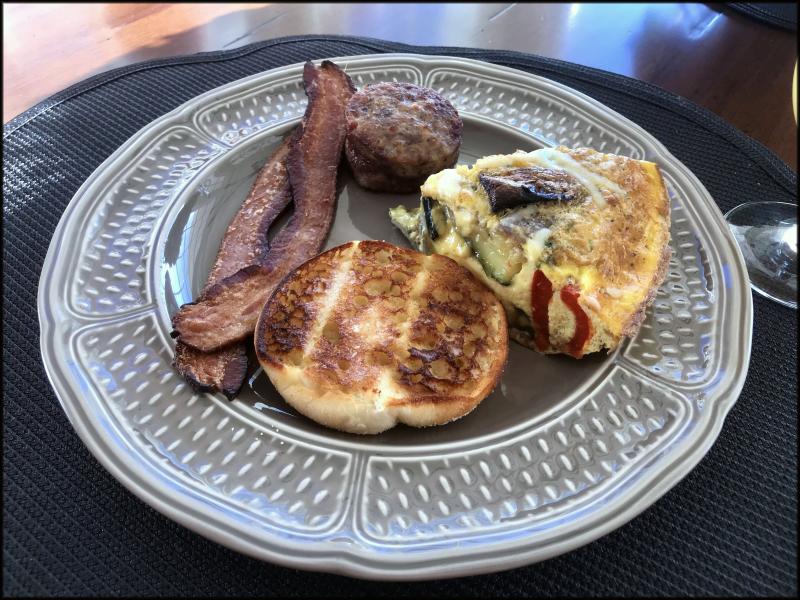How to cook and prepare better bacon
We’ve been having bacon problems. Over the past several months, we’ve been thoroughly disappointed with the several different types of bacon we’ve tried.
At the supermarket, you can find dozens of bacon varieties, from thin-sliced to thick, center-cut or regular, hickory-smoked or applewood, uncured, organic, peppered and maple-flavored. It feels like we’ve sampled all of them.
Most of us have eaten bacon and probably have some idea of how it’s made. Originally, the word bacon referred to a side of pig, kept in one piece and cured in salt. Eventually, the term has come to mean the slices of cured pork usually from the loin and belly. The characteristic pink color comes from nitrates added to the salt used in the curing process.
Traditionally, this was done as a “dry” cure, and the pigs were specially bred for the desirable flavor of the bacon enhanced by days spent over applewood smoke. Although some small-scale specialty producers still operate this way today, most commercially manufactured bacon is made by injecting pork bellies with brine and flavorings such as liquid smoke to reduce the time to market.
I thought our bacon requirements were reasonable: meaty slices without too much fat, no unnecessary preservatives or additives, and lots of smoky bacon flavor. We tried the lower-calorie center-cut varieties, which have so little substance they stick to the skillet or become cardboard in the microwave. They’re off the list.
We tried some of the familiar name brands, including Hormel, Smithfield and Boar’s Head. They were high in fat and salt, loaded with nitrites, and the slices were difficult to separate. These were all a bit slimy, leaving a thick residue on the packaging, and the added water had them spitting while in the skillet. Flavor-wise, they were just OK.
Thinking the problem might be the thinness of the slices, we turned to a few thick-sliced options. We selected “artisanal” brands, but found them too smoky with little taste of pork. We bought a pound of thick-cut bacon from the butcher counter, but the slices turned bad within a week; perhaps without packaging there was no way to tell how long they’d been sitting there.
My next step was researching the “best bacon” taste-test results on a number of different food websites. Serious Eats surprised me with their choice of Oscar Mayer, applauding its familiar flavor and crispy texture. Taste of Home chose Nueske’s, a Wisconsin-based mail-order brand (which the folks at Serious Eats put in last place). Tasting Table also awarded top honors to Oscar Mayer, while Food & Wine chose mail-order brand Vande Rose Farms. I looked into these mail-order options and found the prices of the bacon were much higher than supermarket varieties and the cost of shipping quite daunting.
Maybe it was less a matter of the bacon, and more an issue with how I was cooking it. The microwave is not a good option, no matter how convenient, and the stovetop skillet creates an unpleasant mess.
As it happened, on a recent trip to visit friends, I learned the secret to perfect bacon: cook it in the oven. I watched Michelle line a rimmed baking pan with foil and arrange the slices in a single layer. While some people prefer to arrange the bacon slices on a rack, they actually cook better when directly on the foil, benefiting from contact with the rendered fat and eliminating the possibility of dry sections.
In about 20 minutes, she plated our breakfast: crisp, perfectly browned bacon, roasted vegetable frittata, sausage and English muffins (see photo). When we cleared the table, each of us had left the sausage on our plates, and we gathered in the kitchen to scarf up the leftover bacon. And there was very little in the way of cleanup chores – just make sure to save the bacon fat for one of the recipes below.
Oven Baked Bacon
12 thick-cut slices bacon
Preheat oven to 400 F. Line a rimmed baking sheet with aluminum foil. Arrange the bacon slices in a single layer. Cook until browned and crisp, about 20 to 25 minutes. After removing the pan from the oven, transfer the bacon to a paper-towel-lined plate. Reserve the bacon fat by pouring it through a fine-mesh strainer into a lidded jar.
Buttermilk Cornbread
1 1/4 C cornmeal
3 T flour
1 t salt
3/4 t baking powder
3 T bacon fat
2 eggs, lightly beaten
1 C buttermilk
1/4 t baking soda
add’l bacon grease for the pan
Preheat oven to 425 F. Coat the inside of a 9-inch cast-iron skillet with bacon fat and place in the oven while it preheats.
Combine the cornmeal, flour, salt and baking powder in a medium mixing bowl. Cut in the fat with a pastry blender, mixing well until you have a sandy texture. In a glass measuring cup, whisk together eggs and buttermilk. Pour into the bowl with dry ingredients and stir to combine. In the same glass measuring cup, mix the baking soda with a few drops of water. Add to the bowl and stir to combine. Pour the mixture into the heated skillet and bake for 20 minutes. To serve, invert onto a plate and cut into slices.
Bacon Chive Popovers
2 T bacon fat
1 1/2 C milk
3 large eggs
1 1/2 C flour
1 T snipped chives
1 t garlic powder
1 t salt
1/4 t black pepper
2 T grated Parmesan cheese
Preheat oven to 425 F. Place the popover pan in the oven to heat. In a large mixing bowl, whisk together milk and eggs until frothy. Stir in flour, chives, garlic powder, salt and pepper, mixing just until incorporated. Remove the popover pan from the oven and evenly divide the bacon fat among the cups, greasing the sides and bottom. Fill each cup halfway with batter.
Bake until puffed and golden brown, about 20 to 25 minutes. Remove baked popovers from the oven and dust with Parmesan cheese before serving.























































